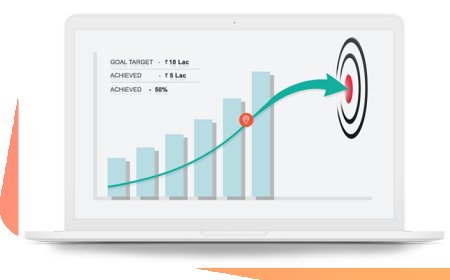Why the USD Exchange Rate Fluctuates: A Deep Dive into Forex Dynamics
Discover why the USD exchange rate fluctuates. Learn key economic, political, and financial factors driving forex volatility and global currency trends.
The USD exchange rate fluctuates regularly, and this movement holds significant weight in the global financial market. As the most traded currency worldwide, the U.S. dollar (USD) serves as a benchmark for many currencies, commodities, and international contracts. Whether you're a trader, investor, policymaker, or simply an informed consumer, understanding the factors that cause the USD exchange rate to fluctuate is crucial for making sound financial decisions.
Understanding Exchange Rate Fundamentals
An exchange rate refers to the value of one currency in relation to another. For instance, if the USD/EUR rate is 1.10, it means 1 U.S. dollar can be exchanged for 1.10 euros. However, these values arent static. Exchange rates change in real-time due to supply and demand, market sentiment, and macroeconomic indicators.
When the USD exchange rate fluctuates, it influences everything from the cost of imports and exports to the value of foreign investments. Its not just traders who care about these changes; central banks, multinational corporations, and even tourists are affected.
Major Factors Influencing USD Exchange Rate Fluctuations
Lets explore the key drivers behind the volatility in the USD exchange rate:
1. Monetary Policy and Interest Rates
The U.S. Federal Reserve plays a central role in shaping the strength of the dollar. When the Fed raises interest rates, the USD often strengthens because higher yields attract foreign capital. Conversely, rate cuts generally weaken the dollar as returns on U.S. assets become less attractive.
The mere expectation of a policy shift can move the currency markets. Traders and investors constantly analyze economic data, central bank statements, and geopolitical developments to anticipate future moves.
2. Inflation and Economic Indicators
Inflation is a silent force behind currency movement. Low inflation is typically associated with a stronger currency because it preserves purchasing power. High inflation, on the other hand, can erode confidence and reduce demand for the currency.
Economic indicators such as GDP growth, employment data, retail sales, and manufacturing output also impact the USD exchange rate. Strong U.S. economic performance generally leads to a stronger dollar, while signs of weakness may prompt depreciation.
3. Global Geopolitical Events
Geopolitical tension, trade disputes, military conflicts, and natural disasters often lead to uncertainty in the financial markets. The U.S. dollar is considered a "safe haven" currency, meaning that during global turmoil, investors flock to it for stability. This flight to safety can cause the USD exchange rate to fluctuate sharply upward.
However, if the U.S. is directly involved in the crisis, the dollar might weaken as investors look elsewhere for refuge.
4. Trade Balance and Current Account Deficit
A countrys trade balancethe difference between exports and importscan significantly affect its currency. If the U.S. exports more than it imports, demand for the dollar increases, potentially strengthening it.
Conversely, a large and persistent current account deficit implies more dollars are leaving the country than coming in, which can put downward pressure on the USD.
5. Market Sentiment and Speculation
Currency values are heavily influenced by trader sentiment. Forex traders speculate on short-term movements in exchange rates based on technical analysis, news, and economic forecasts. This speculation contributes to the day-to-day USD exchange rate fluctuations that can appear disconnected from macroeconomic fundamentals.

Impact of USD Exchange Rate Fluctuations on the Global Economy
The effects of USD volatility extend well beyond U.S. borders. Since the dollar is the worlds primary reserve currency, its fluctuations influence global trade, commodity prices, and emerging market economies.
1. Emerging Markets Vulnerability
Many emerging economies borrow in USD. When the dollar strengthens, repaying debt becomes more expensive, leading to financial stress. At the same time, their currencies may weaken, triggering inflation and slowing growth.
2. Commodity Price Shifts
Commodities like oil, gold, and wheat are priced in dollars. A stronger dollar typically leads to lower commodity prices in USD terms, making them more expensive in local currencies. This affects global supply chains and can lead to economic strain in commodity-dependent nations.
3. Corporate Earnings and Stock Markets
For U.S.-based multinational companies, a stronger dollar means foreign earnings translate into fewer dollars, potentially hurting profits. Conversely, a weaker dollar can boost overseas revenue. This connection causes equity markets to react strongly to currency movements.
Managing Currency Risk in a Volatile USD Environment
When the USD exchange rate fluctuates, businesses and investors must manage risk wisely. Here are a few strategies commonly used:
-
Hedging with Derivatives: Forward contracts, options, and futures help mitigate currency risk.
-
Diversification: Spreading investments across different currencies and markets can reduce exposure to USD volatility.
-
Natural Hedging: Companies with global operations may align their cost structures with revenue streams in local currencies.
Currency risk management has become a top priority in a world where exchange rates are increasingly influenced by political instability, shifting trade alliances, and monetary divergence among central banks.
Role of Central Banks and Government Policy
Government agencies and central banks dont just watch the exchange ratethey actively manage it when necessary. Through tools like foreign exchange interventions, interest rate changes, and regulatory adjustments, policymakers can attempt to stabilize the dollar.
However, sustained interventions are rare. Most developed nations, including the U.S., prefer to let the market determine the value of their currency under a floating exchange rate system. Still, comments from officials or coordinated efforts among central banks can create sharp short-term movements.
The Role of Digital Currencies and Future Outlook
As technology evolves, the USD faces potential competition from digital currencies, including central bank digital currencies (CBDCs) and cryptocurrencies. While still in the early stages, these innovations could influence capital flows and monetary policy, thereby affecting how the USD exchange rate fluctuates in the future.
Additionally, long-term shifts in global economic powersuch as the rise of Asian economiescould reshape how the dollar interacts with other currencies over the coming decades.
Final Thoughts
The fact that the USD exchange rate fluctuates is not just a technicality of foreign exchange marketsits a reflection of a dynamic and interconnected global financial system. These fluctuations stem from a combination of fundamental economic factors, market psychology, and geopolitical events.
For investors, traders, and businesses, understanding why the dollar moves is essential for strategic planning and risk management. Whether the dollar is rising or falling, there are always opportunities to respond effectivelyif you know where to look.
In todays fast-paced financial landscape, staying informed and adaptable is key. As long as the U.S. remains a central figure in the global economy, the world will continue to watch the USD exchange rateand respond to every fluctuation.


































